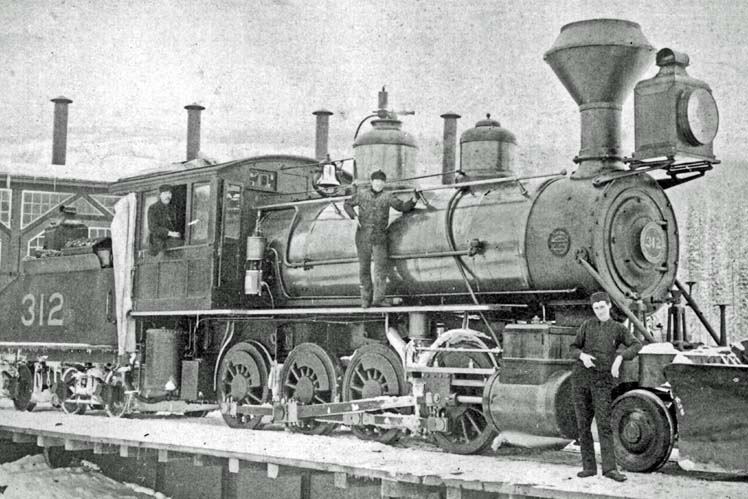
Vancouver British Columbia - For many years, the western world had been intrigued with the mysteries of the Orient and with its
riches.
Its spices, tea, and silk were very hard to come by and were therefore wanted by everyone.
By 1902, ships carrying large cargos of silk worms were arriving in San Francisco, Seattle, Portland, and Vancouver.
Nobody really gave much thought about how the silk got here, as long as it did, but the process was really quite unique.
The silk cocoons were bundled with the live worm still inside, into bales approximately 36 inches high, 24 inches wide, and about 12 inches thick.
Each was wrapped in straw, jute, or burlap, and weighed between 125 and 200 pounds.
These bundles were placed on board ships at their origin and the voyage to North America began.
Because they were perishable, the speed with which they were transferred to the mills was important.
Special trains were put together to make the move from the dock to the mill.
Silk was not shipped in freight cars but rather in renovated passenger equipment, baggage, or express cars, all of which had special steel-tired
wheels.
The interior of the cars were lined with varnished wood, coated in paper, made airtight, and sealed to keep the moisture out.
The trains were usually made of 10 to 12 cars, and at one point reached a record of 21.
Preparation for taking on the silk cargo began days in advance of its arrival.
Yardmasters, locomotive foreman, train masters, master mechanics, road masters, and more received several days notice by letter, telegraph, or in person from
several hours to a few days notice.
Crewmen sometimes did not have very much time to prepare for the shipments.
The train was usually waiting at least eight hours in advance of the arrival of the ship.
The customs personnel went out to meet the ships so there was no delay once the ship reached shore.
The transfer took about eight minutes.
The lockup procedure took five to 10 minutes, and then the silk trains were roaring along the tracks heading for the silk mills in New York.
Newer, faster, ships were brought into operation, which helped to speed up the arrival of the silk.
The connection was important, and on 24 Oct 1924 a record run from Vancouver to Field was set.
Leaving Vancouver on Monday, 20 Oct 1924 at 19:47, a Canadian Pacific silk train carried silk cargo from the CPR ship Empress of Russia and made the run to
Field, a distance of 504.5 miles, in 14 hours and 26 minutes.
The train consisted of 15 cars and arrived in Field on 21 Oct 1924 at 10:13.
Silk was such a valuable cargo that it had its own place on the New York Stock Exchange, called the National Silk Exchange, which was established in the late
1920s.
Not only was the silk valuable and perishable, but it was covered by high-premium insurance.
The rate of six percent was not per month, or per day, but rather per hour.
The most dramatic record for speed was set by the Empress of Canada, with a specific shipment that made the trip from Japan, across Canada, and to New York, in
just 13 days.
The longest train ran in 1927, consisting of 21 cars, containing 7,200 bales of silk worms worth $7 million ($103,677,777 in today's dollars).
The era of the silk trains, speeding across the continent, came to an end with the development of synthetics, and to some extent because shippers began using
the Panama Canal.
It took about a week longer, but was about half the cost.
Colleen Palumbo.
provisions in Section 29 of the Canadian
Copyright Modernization Act.

